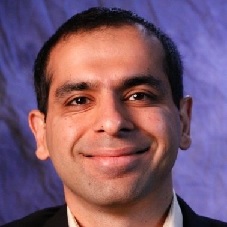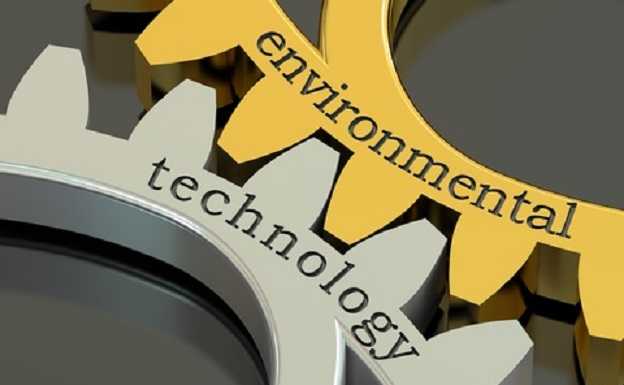The solitary champion of Dell’s IoT campaign is gathering reinforcements. Over the past year and a half, Dell EMC has mustered far flung resources to assemble a unified front for IoT deployment, demonstrating in this process the extent to which the organization has integrated assets won through its 2016 merger, as well as new technology potential that can be achieved through the exploitation of synergies in an expanded solution portfolio. Back in the fall of 2015, Dell’s IoT play was a hardware one, based on launch of a ruggedized gateway product; today, Dell EMC has articulated an IoT strategy that draws on hardware, software, services, internal and external partners to meet growing customer interest in this area.

Commenting on the Internet of Things at Dell EMC World in October of 2016, then executive director for a year old IoT division Andy Rhodes asked: “What is IoT? It’s the collection of data that we could never afford before,” adding that “data stored is a cost centre. Data analyzed is a profit centre.” For Rhodes, IoT represented a “series of use cases that either drive efficiencies or change the business model,” which had been made affordable by technology that could reduce the cost of data storage, namely Dell’s gateway product. In his view, the gateway addressed the explosive storage costs of massive streaming data, as well as issues with latency, speed and connectivity through integration with OT protocols that allow users to “connect the unconnected,” and through a “cleansing process” that allows for analysis of data closer to where it lives, at the edge. “I don’t see the gateway as an intelligent network device; rather I see it as an ingestation, I/O device and as a server at the edge, and as a network protocol to the right data which leads to the next level of the data architecture,” he noted, which obviates the need for costly data transmission and cloud storage. “You can get very cheap analytics at the edge,” he observed.
To deliver the other components of IoT – ex. vertical applications, various sensors, devices and other hardware, connectivity, etc. – Dell was content to rely on partners, several of whom put their IoT chops on display in The Ice Cream Smart Factory, a showcase at the 2016 event that demoed 22 different use cases for IoT in the areas of manufacturing, energy, supply chain and logistics, including Emerson, Software AG, SAP, Eigen Innovations and Kepware. As Rhodes explained, “If any one says they can do IoT all on their own, they are a liar. We’ve curated a partner ecosystem (DellIoTpartners.com boasted 60 partners 18 months into the program).” Partners were segmented, and companies such as Microsoft Azure, SAP, Eigen, OsiSoft and PTCe, GE, Zebra, AT that had strong backend capability, domain knowledge, expertise in a vertical niche or a horizontal platform were prioritized as strategic relationships, even though, Rhodes added, Dell EMC would need to remain “promiscuous because who knows who will win” [dominant place in the IoT market of the future].
This IoT strategy was predicated on key aspects of Dell’s traditional market approach – and on its hardware focus, in particular. Delivering tech productivity at lower cost for many years, largely to smaller and mid sized customers, through cost competitive PCs, servers and other gear, Dell’s initial foray into IoT was based on the sale of low cost (relative to competitors’) gateway devices that in turn could reduce compute and storage costs. In more recent years, Dell’s value proposition has extended to a hardware agnostic or “open” stance that enables customer choice in software and OS, and that allowed for the embed of lower cost Dell gear in multiple different kinds of environments. Similarly, on launch, the gateway product was defined as “open” – indeed a device that would support the interoperability of multiple devices and systems. Rhodes explained: “we’d rather that you bought all the IoT pieces from us, but you can disaggregate them and do with the data what you wish. That’s what we mean by open – the use of industry standard architectures and industry standard OS. Not just Linux, but also Ubuntu, Windows IoT, Wind River, and we could run other OSes, like Red Hat. The OS are open because they are writing drivers to the new OT protocols.”

A half year later, the winds of change had begun to blow – but only just. At the Dell EMC World 2017 event, Jeff Brown, VP, global IoT and embedded PC sales, Dell EMC described the development of ruggedized, purpose built hardware for key industrial verticals, including transportation, energy and manufacturing, as the sweet spot for the company’s IoT strategy. According to Brown, “a new one [gateway] was introduced in June 2017 rated for operation in -30 to 70 degrees Celsius, suitable for light or heavy industrial environments, but it is a sub $500 gateway – a very cost effectivity solution for this market.” Commenting on announcement of the VMware Pulse IoT Centre which was featured at the event, Brown described this as a “software stack that’s not sold on our gateway today, that can be sold as a stand alone [product] which provides a much higher level of security, and offers integrated management beyond the gateway.” For its part, Dell EMC gateway software consisted of the on-prem and SaaS-based Edge Device Manager designed for asset/inventory management, updates on bios, applications, and OSes and automated patch management for update of all these. An IoT Advisory Service was also introduced at the conference. Brown described this as a product of the merger, based on the work of 200 system architects that EMC had “building out IoT on the cloud side”; in contrast, the gateway division was based on “building out our IoT strategy on the edge side.”

Other SMEs at Dell EMC World 2017 were perhaps better able to see their products bathed in an IoT solutions glow. For example, James Mouton, SVP, Extreme Scale Infrastructure, Dell EMC Server Solutions, a group within the company that focuses on the rapid configuration and build of unique server items for a given (large) customer using rackable, integrated systems for massive distributed workloads, drew parallels between designs created for large, scale out environments and IoT edge computing. Mouton pointed to a micro-modular data centre (one rack with a DS 9000 on rack, equipped with an IoT gateway) on demo at the event to show carriers, who will need to modernize infrastructure in order to handle the massive traffic that will appear with 5G communications, the potential for use of centralized and standardized core systems for distributed computing. “You [the carrier] can drop this data centre in a box near a radio tower, near the edge network,” Mouton explained. “IT can help you collect IoT traffic, but you will also want some compute processing to make some triage analysis before you send everything down the wire and clog the wire. So that same style gear that was actually designed for large, scale out environments seems to be very applicable to edge computing when you have to do some pre-processing very quickly to do some triage – for example in machine learning environments.”

Similarly, Varun Chhabra, senior director, product marketing, Dell EMC Storage, pointed to Project Nautilus, a new storage platform from EMC research aimed at addressing specific data requirements in IoT deployments. Unlike regular writes from an app, Chhabra explained that IoT data comes in small sizes, but in real time and from multiple sensors. Designed for the high speed ingest of data from multiple, concurrent real-time data streams, Nautilus represents “a different storage perimeter” that can manage streaming data – the “third pillar” to file and object storage, he added. EMC also worked on this project with analytics vendors to enable the query of IoT data in real time, creating tight APIs with Apache Flink open source which will sit on top of Isilon and ECS resilient storage layers, and enabling Nautilus to “unify batch and real time analytics” for the seamless delivery of IoT applications.
Largely uncoordinated, these initiatives presented a dilemma for the newly combined Dell EMC entity that Brown identified as issues of skill, and competition. “This is a bit of a conundrum for us,” he explained. “In order to own IoT from edge to core to cloud, you have to have people that can do it all – but we have a lot of partners that can do it all; we’re aligned with pretty much every big SI and consultant in the world… We want to work with the architects that want Dell to do this, and are ready to identify what Dell assets should be used where.” But even more problematic for Dell EMC IoT is a question that dogs most vendors looking to move past hardware and up the stack: “If we become too much of a solution company, we begin to compete with our customers. We have a lot of customers that are solution providers; we want to be a trusted platform provider, creating solutions with partners on the ISV side. The hardware is important, but it’s the software that’s going to solve the customer’s problem: apps are higher value, but we’re not application experts.”
With the combined assets – approximately 140,000 employees – that the Dell EMC merger brought to bear on the market, skills issues were not likely to remain an ongoing challenge. The merged entity brought expertise across the range of IT products and services, ranging from device to server/compute, storage, networking, software management, security – from cloud to edge. The critical question, in the case of IoT, however, is how to draw together various Dell EMC assets to support the unified messaging that Rhodes identified as key to success back in 2016: “We talk about the gateway because that’s the new piece of our IoT architecture product, but when we talk to customers, we talk in terms of end-to-end. We say we have edge to core to cloud, and it’s a balanced view in all of our messaging. So, though I own a piece of the IoT architecture, I also own the whole point of view for Dell – and we would pull in Pivotal assets, etc. We’re all aligned on the one message that reps take out.”
For on the evolution of Dell EMC IoT, and formation of the unified front, stayed tuned for part 2.








